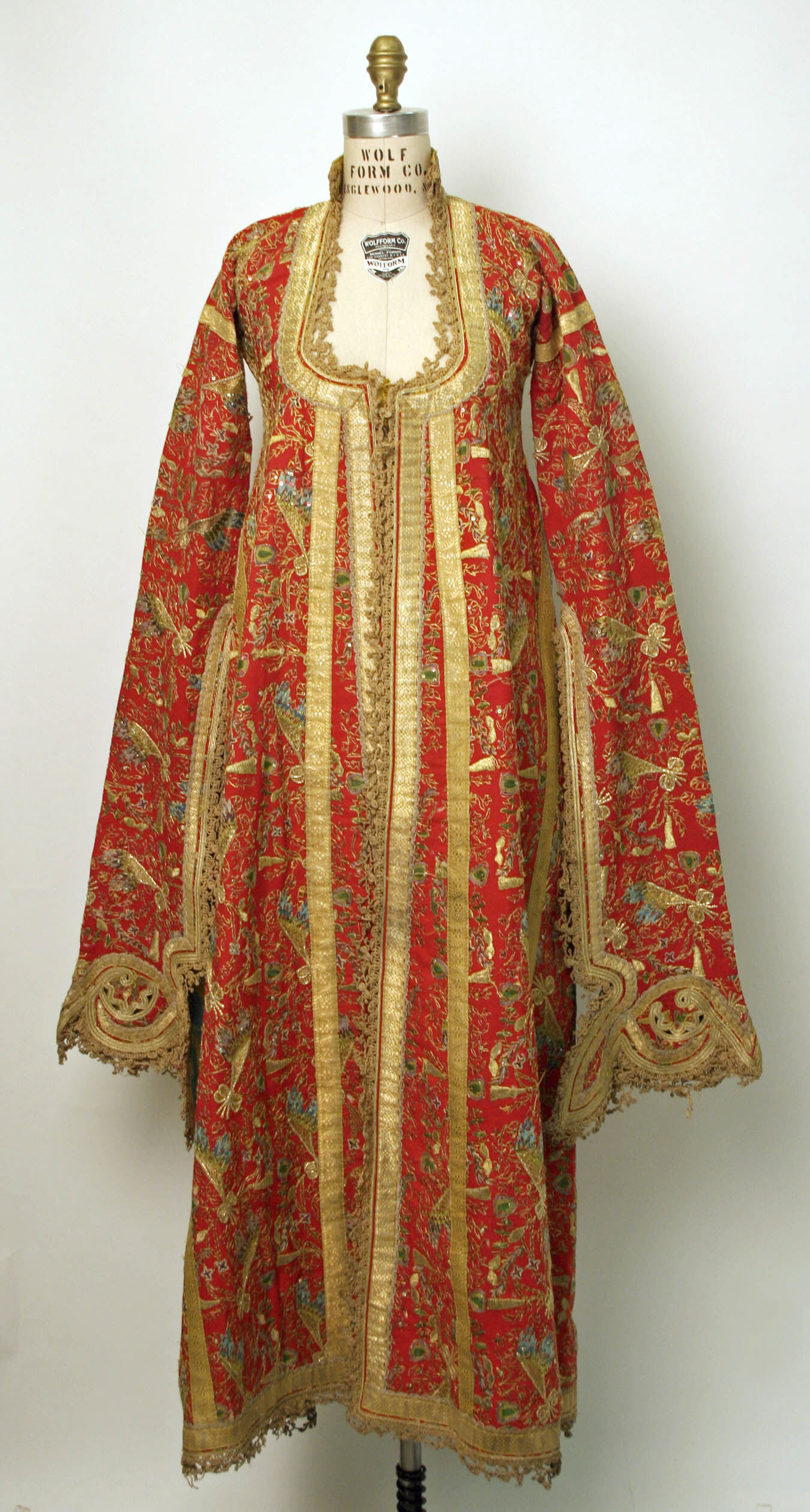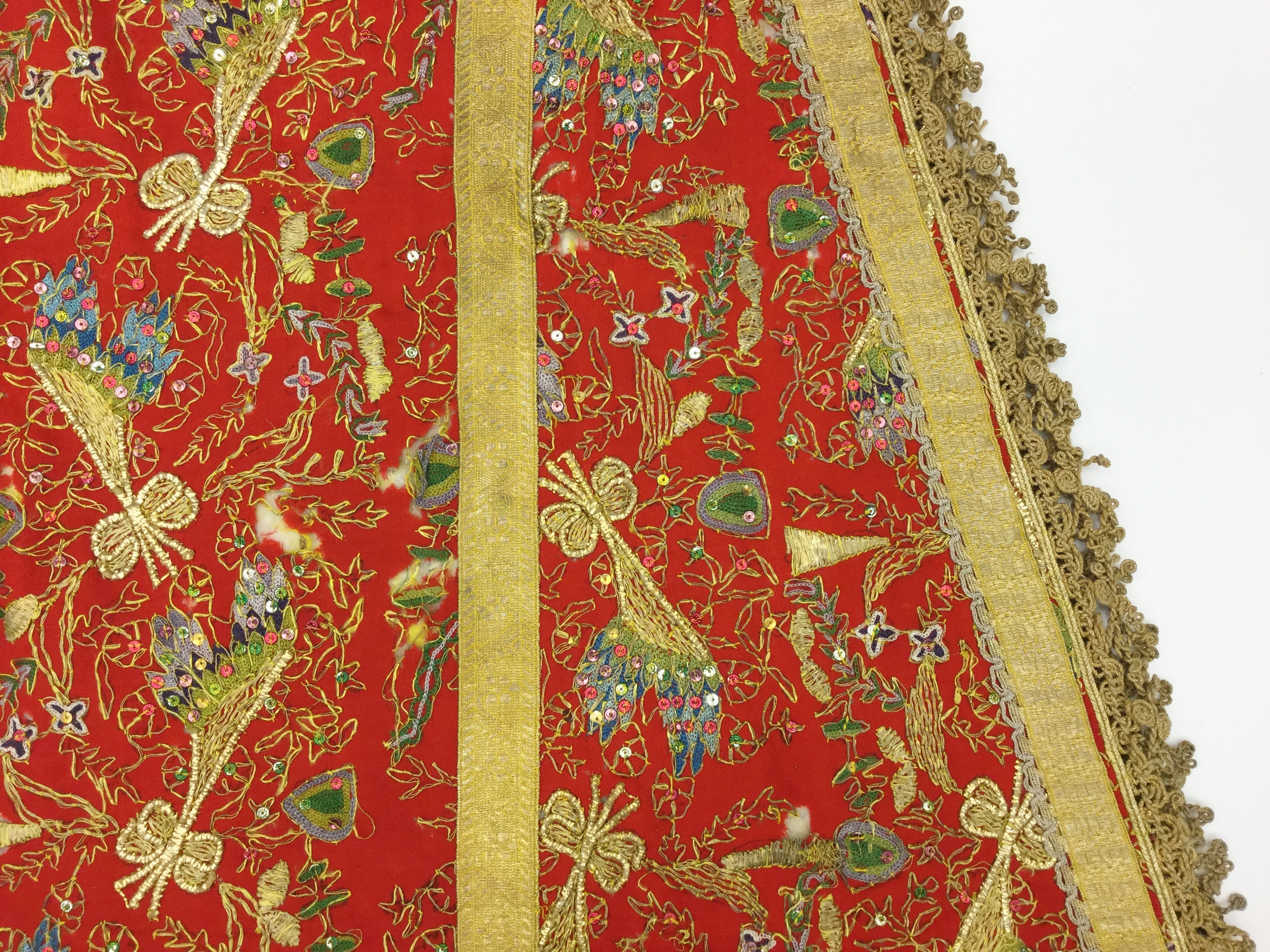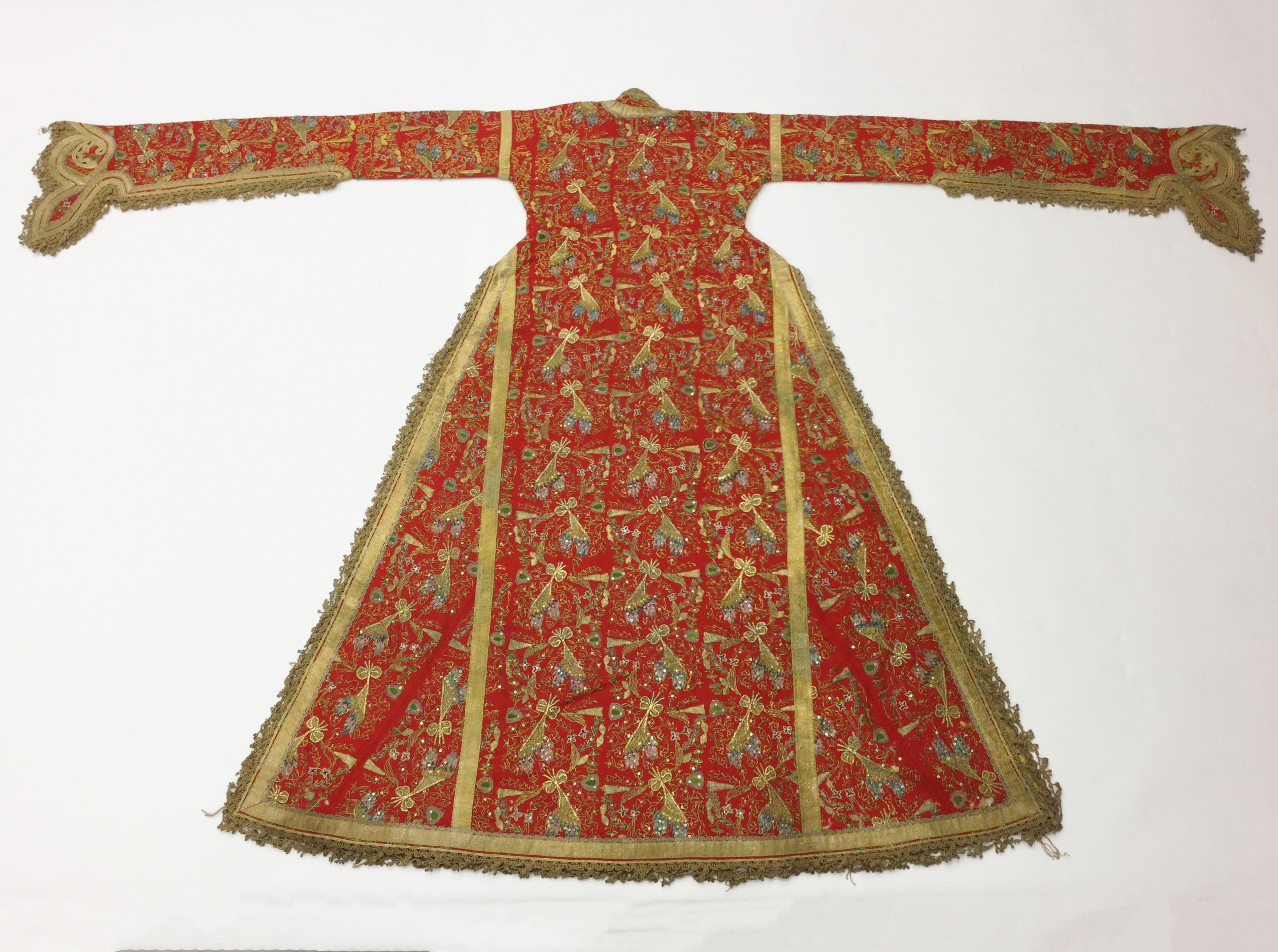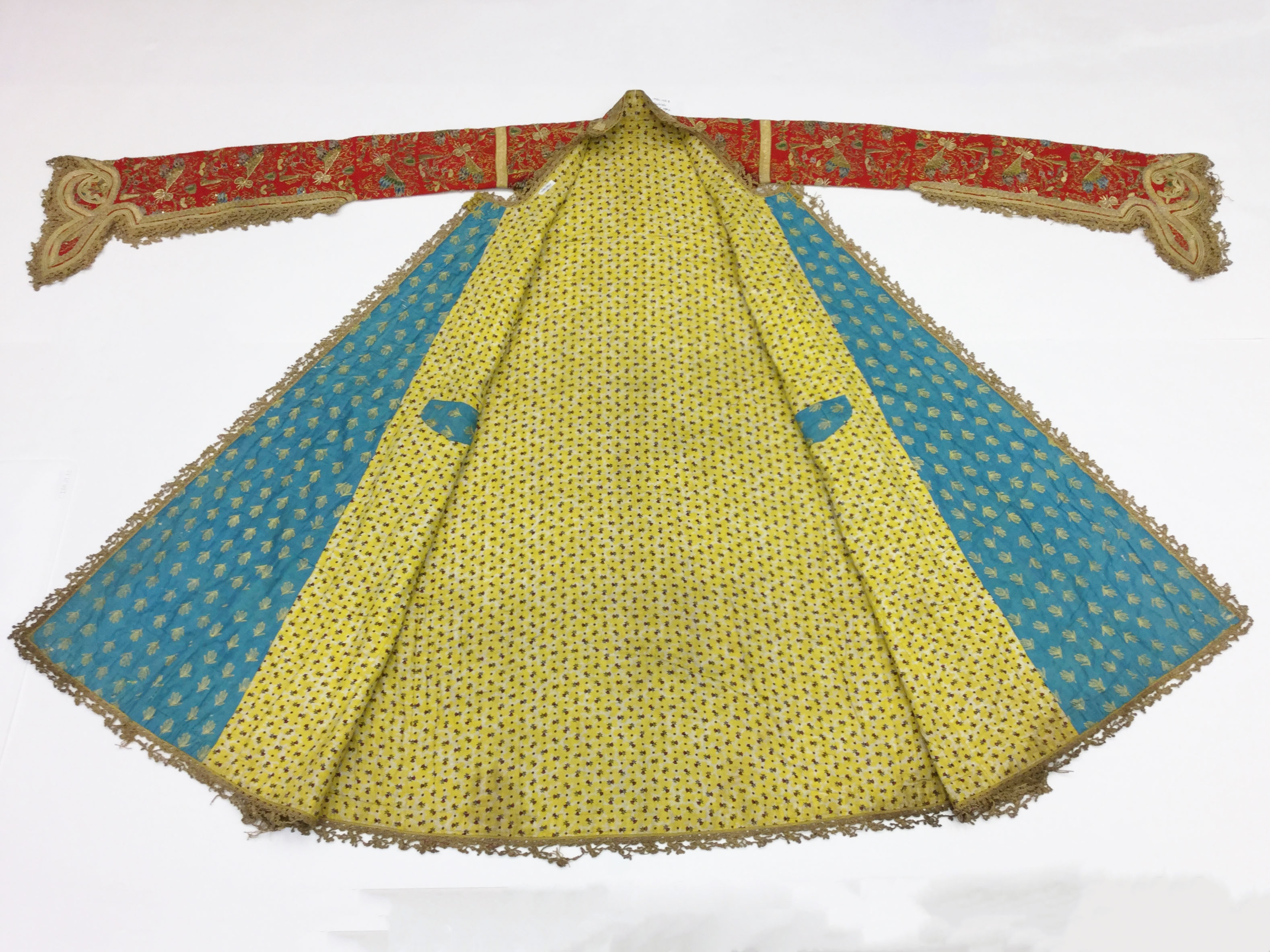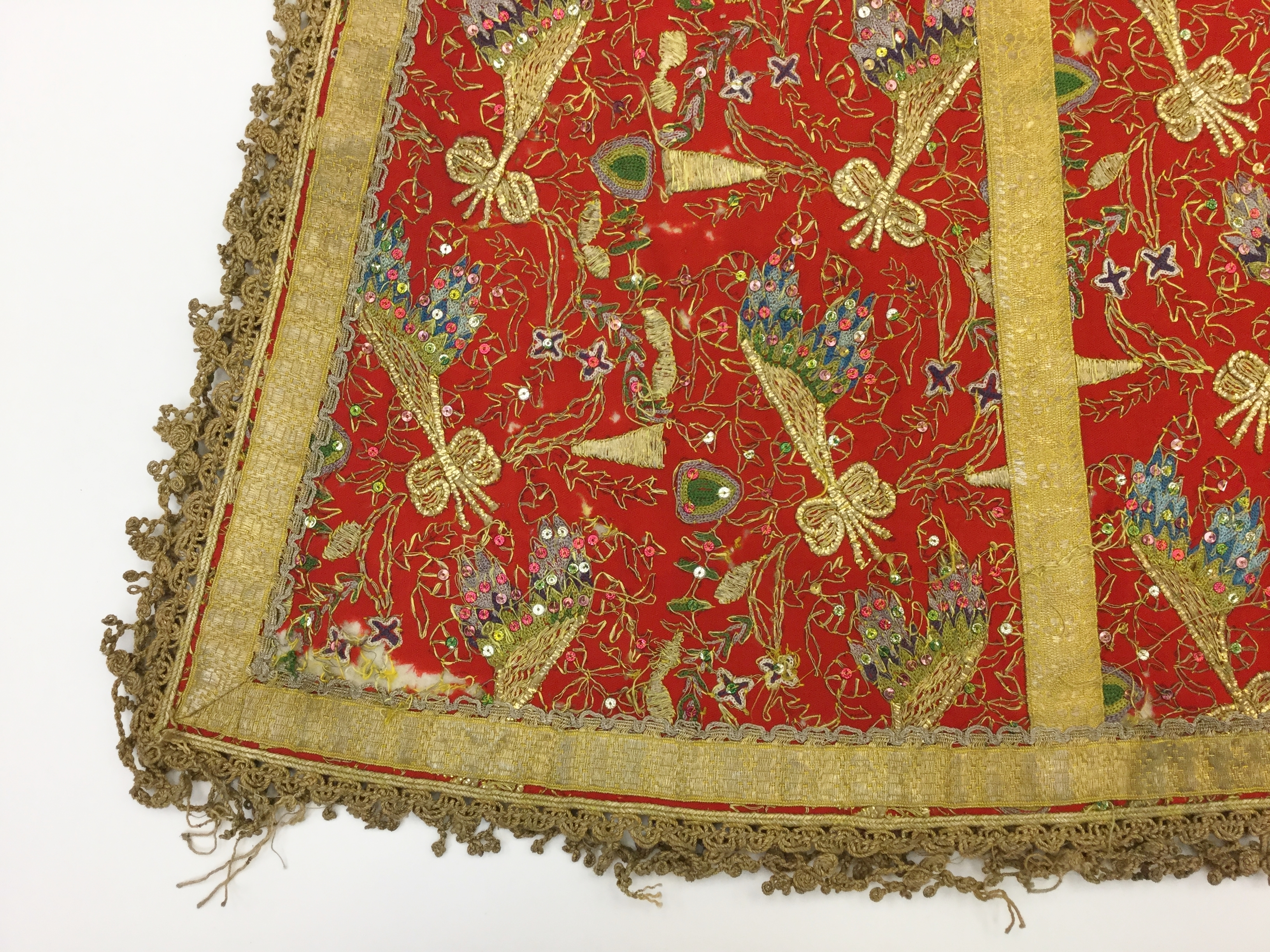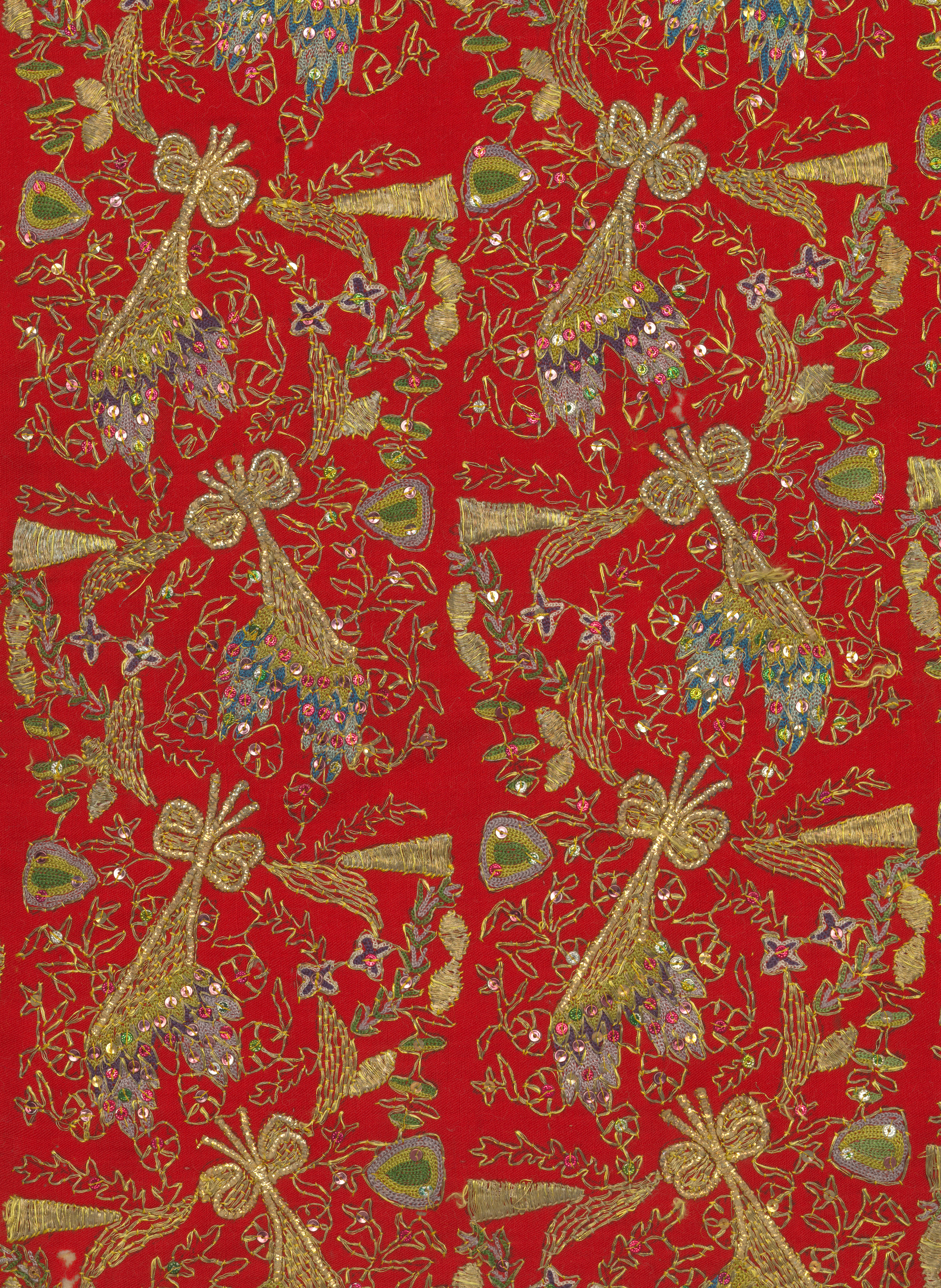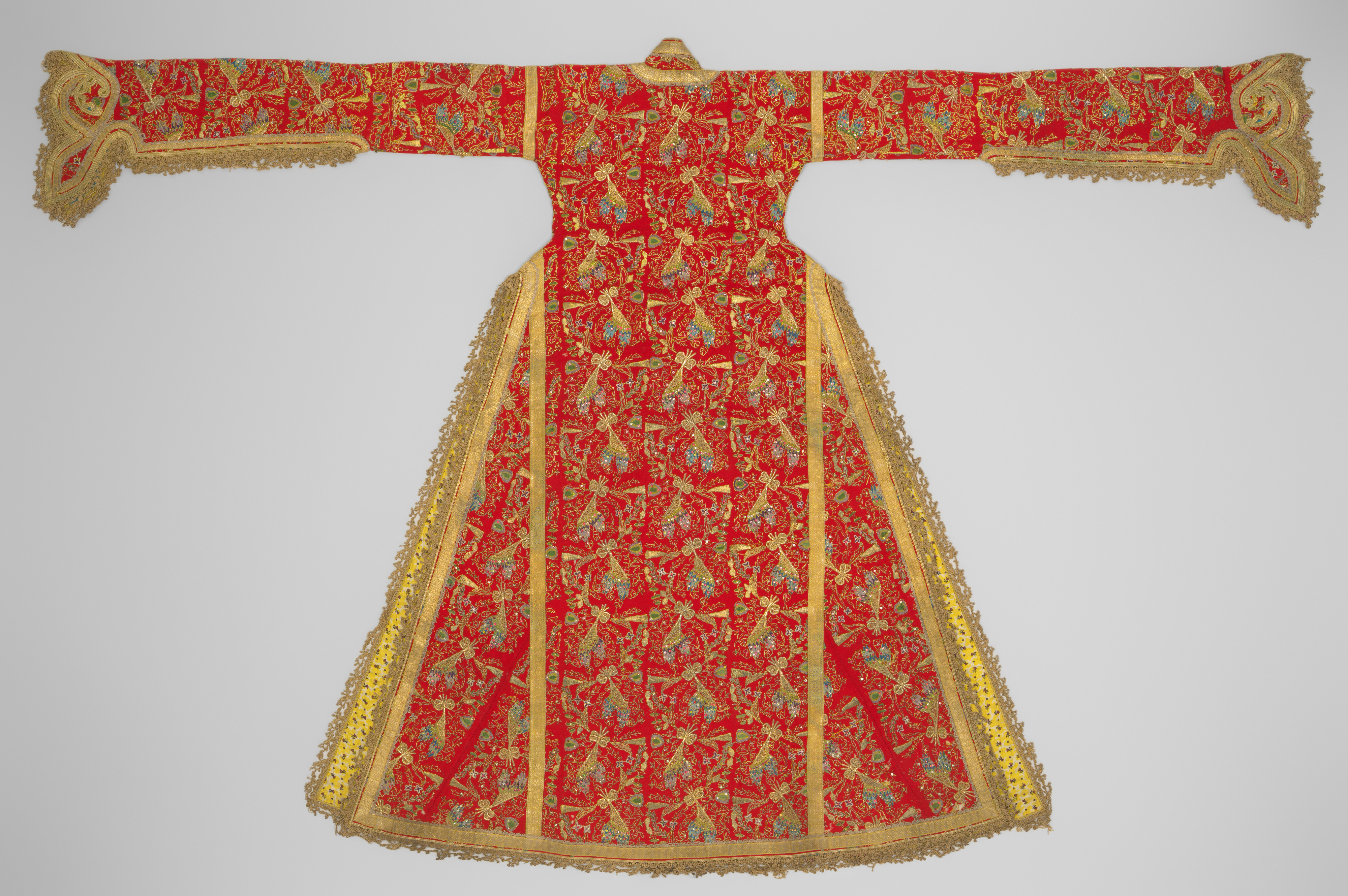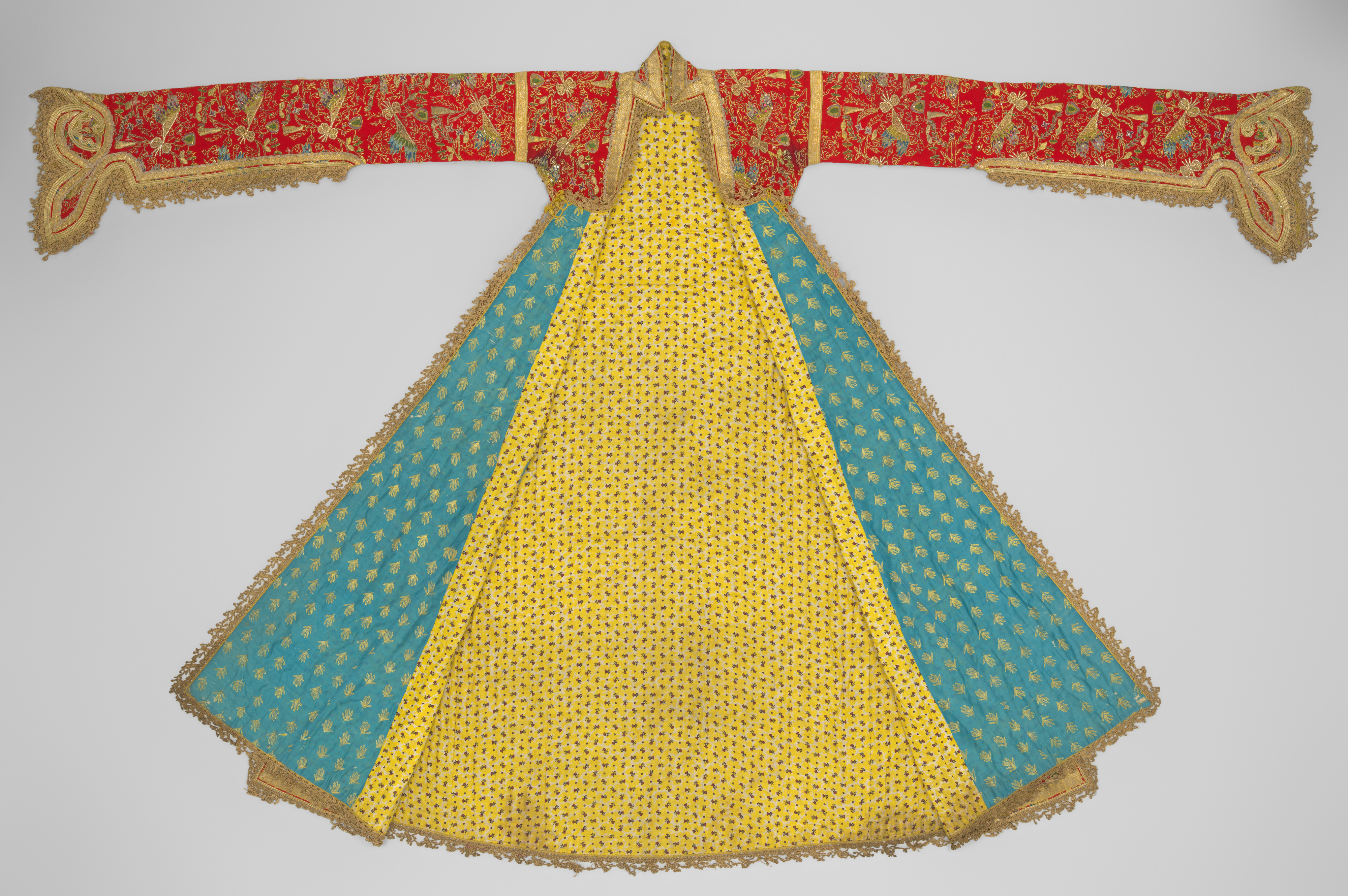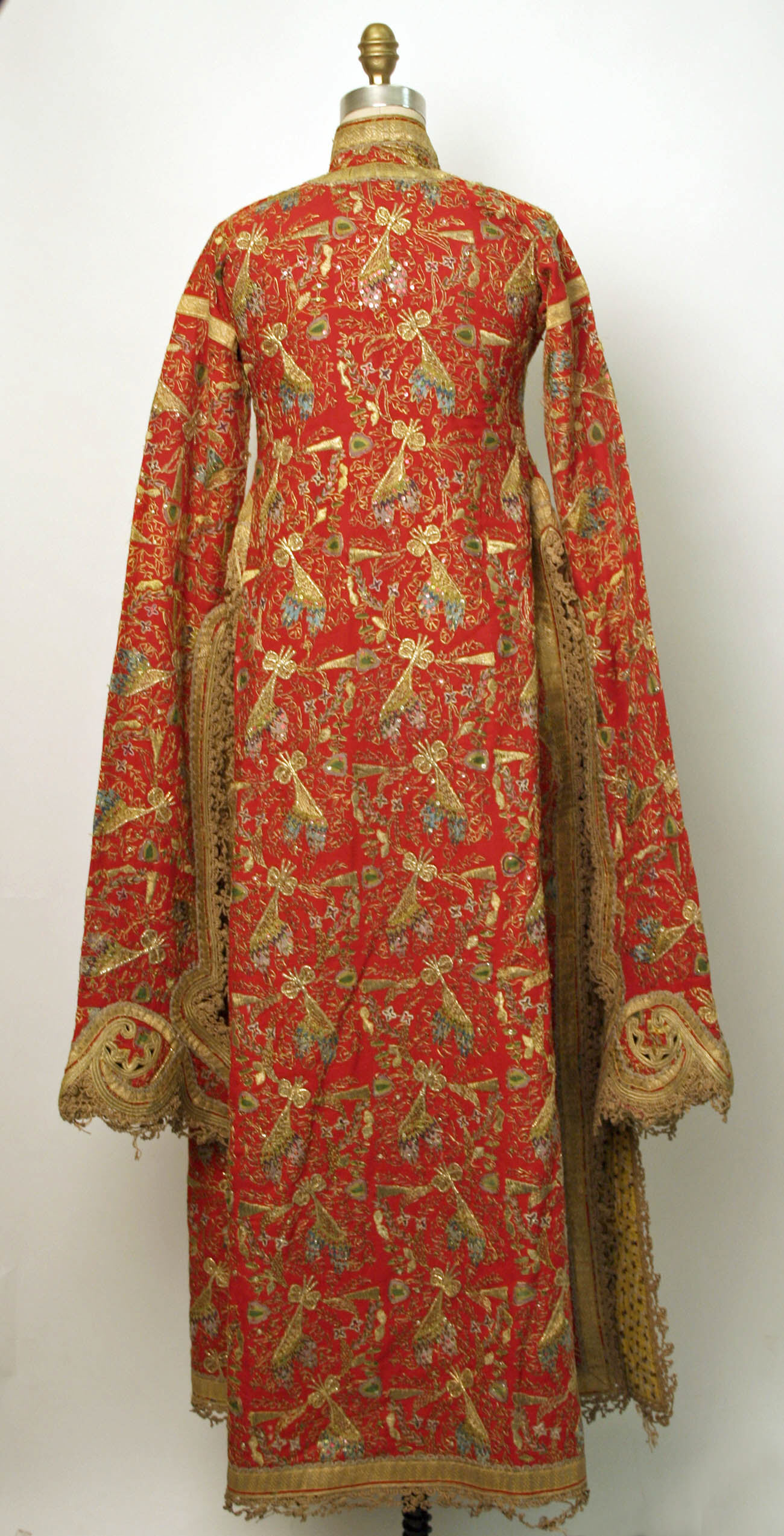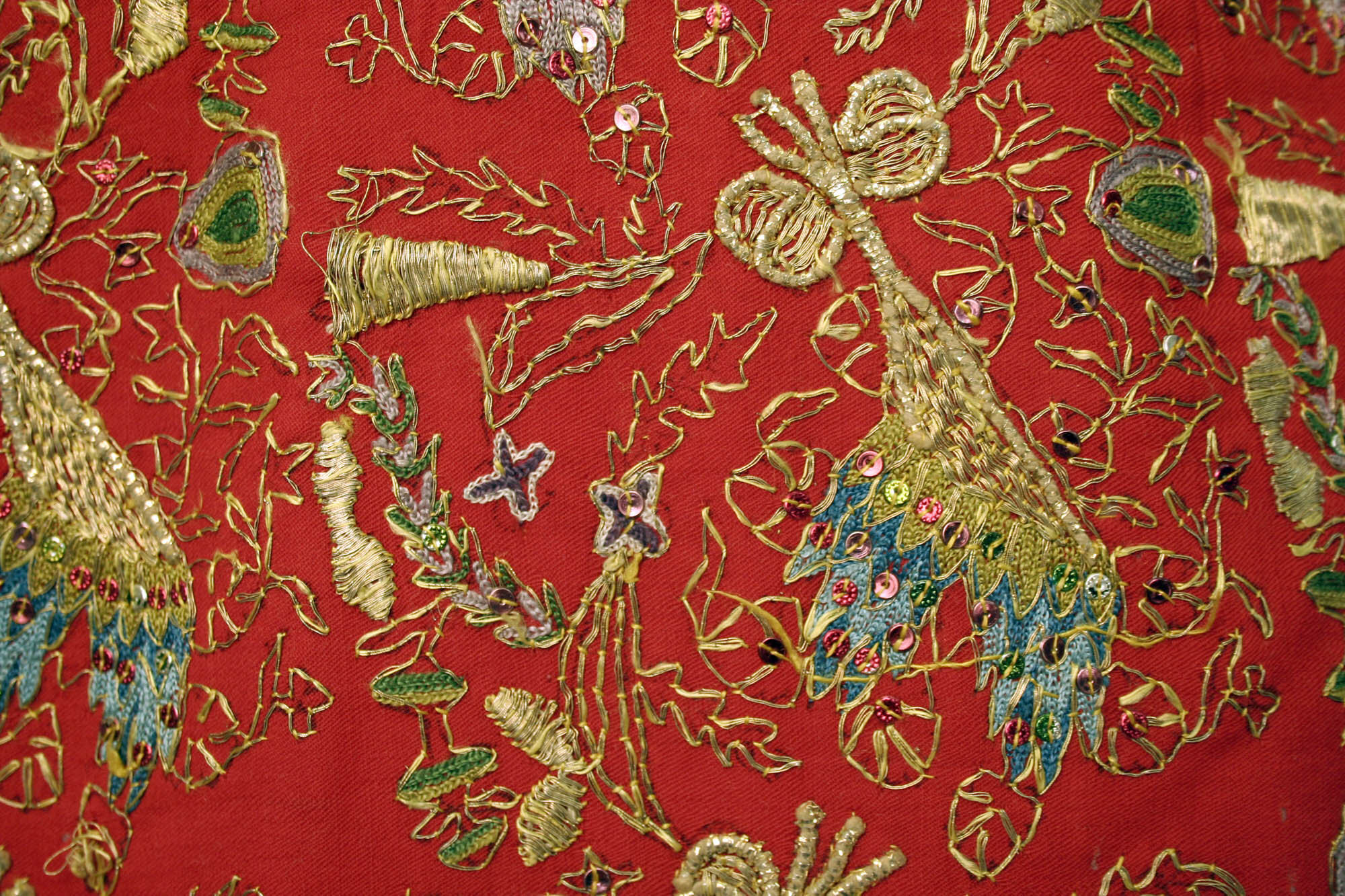Uçetek Entari or Three-Skirt Robe
Not on view
This üçetek entari or three-skirt robe has a low neckline and long sleeves with elaborately decorated ends. It is characteristic of an Ottoman woman’s fashionable outfit of the later nineteenth century and worn by women of middle and upper classes on special occasions. The hanging sleeves of this robe are only seamed from the underarm to the elbow, which allows for the lining of fine patterned and embroidered turquoise wool to show through and create a colorful contrast with the red of the main fabric. The shirt that was worn underneath would also be partly visible along the arms or the neckline.
A belt with a decorative girdle clasp or a fine sash would hold the entari together at the waist. While the overall shape corresponds to examples worn in Istanbul and other parts of Anatolia, the details of the robe present similarities with those of the Balkan tradition. These robes have long sleeves ending in split-palmette shaped cuffs with scalloped edges. Extensive use of passementerie trim bands made with metal thread is applied to mark the sections of the skirt, the robe’s edges, and the arms of the robe, and a fitted waist and a widening skirt. The wool twill of the garment is embellished with hüseyni embroidery known for its lavish use of silk, large amounts of metal thread, and applied sequins, which provides the garment with an attractive repeat pattern and a glittery appearance. The use of synthetic dyed silks in the embroidery suggests a dating of the last quarter of the nineteenth century. Such elaborately embroidered fabrics were produced in Kütahya in western Anatolia, and in other places and were particularly popular among Balkan communities.
Due to rights restrictions, this image cannot be enlarged, viewed at full screen, or downloaded.
This artwork is meant to be viewed from right to left. Scroll left to view more.


